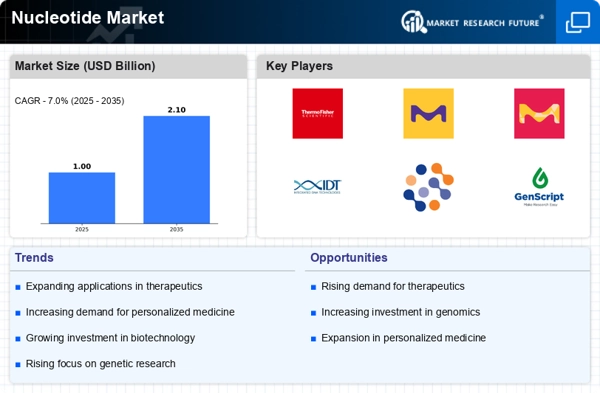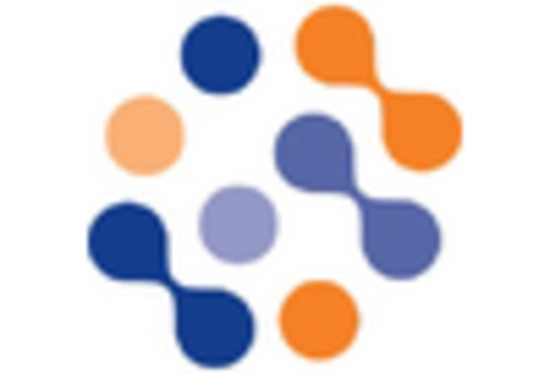Advancements in Genetic Research
The Nucleotide Market is experiencing a surge due to advancements in genetic research. Innovations in gene editing technologies, such as CRISPR, are driving demand for nucleotides as essential components in genetic engineering. The market is projected to grow at a compound annual growth rate of approximately 10% over the next five years, reflecting the increasing reliance on nucleotides in therapeutic applications. Researchers are utilizing nucleotides to develop targeted therapies for genetic disorders, which is likely to expand the market further. As the understanding of genomics deepens, the need for high-quality nucleotides in research and clinical settings becomes more pronounced, indicating a robust future for the Nucleotide Market.
Increased Investment in Biotechnology
The Nucleotide Market is benefiting from increased investment in biotechnology. Venture capital and government funding are flowing into biotech firms focusing on nucleotide research and development. This influx of capital is likely to accelerate innovation and the commercialization of nucleotide-based products. As biotechnology continues to advance, the demand for nucleotides in various applications, including diagnostics and therapeutics, is expected to rise. The growing interest from investors suggests a robust outlook for the Nucleotide Market, as it becomes a focal point for technological advancements and new product development.
Growing Applications in Pharmaceuticals
The Nucleotide Market is significantly influenced by the growing applications of nucleotides in pharmaceuticals. Nucleotides are integral in the development of antiviral and anticancer drugs, which are increasingly in demand. The pharmaceutical sector is projected to account for a substantial share of the nucleotide market, driven by the need for innovative treatments. For instance, nucleotide-based therapies are being explored for their potential in treating diseases such as hepatitis and various cancers. This trend suggests that as the pharmaceutical industry continues to evolve, the demand for nucleotides will likely increase, further solidifying their role in drug development and enhancing the Nucleotide Market.
Rising Interest in Personalized Medicine
The Nucleotide Market is poised for growth due to the rising interest in personalized medicine. As healthcare shifts towards tailored treatments, nucleotides play a crucial role in developing personalized therapies based on individual genetic profiles. This trend is supported by the increasing prevalence of chronic diseases, which necessitate customized treatment approaches. The market for personalized medicine is expected to expand significantly, with nucleotides being central to the development of diagnostic tools and targeted therapies. This shift towards personalized healthcare indicates a promising future for the Nucleotide Market, as it aligns with the broader movement towards individualized patient care.
Expansion of Research and Development Activities
The Nucleotide Market is experiencing growth due to the expansion of research and development activities across various sectors. Academic institutions and private companies are increasingly investing in R&D to explore the potential of nucleotides in diverse applications, including agriculture and environmental science. This trend is likely to enhance the understanding of nucleotide functions and their applications, leading to innovative products and solutions. The emphasis on R&D indicates a vibrant future for the Nucleotide Market, as new discoveries could open up additional markets and applications for nucleotides.


















Leave a Comment